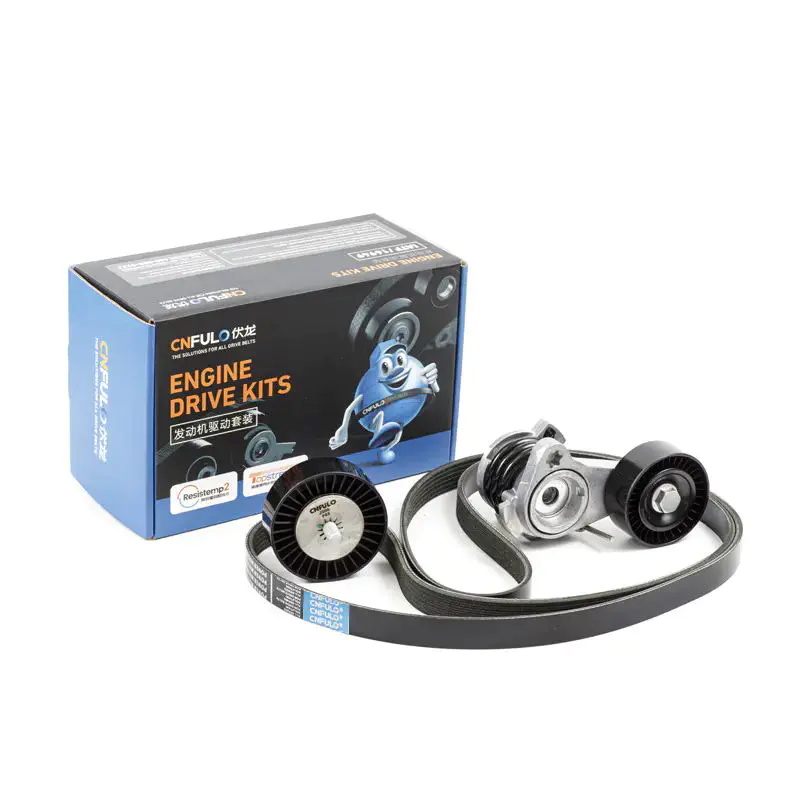Summary:The efficient operation of an engine relies on the synchronization between its various components. One crucial component that plays a significant role in this synchronization is the timing belt. The timing belt ensures that the engine's valves and pi......
The efficient operation of an engine relies on the synchronization between its various components. One crucial component that plays a significant role in this synchronization is the timing belt. The timing belt ensures that the engine's valves and pistons move in harmony, optimizing performance and preventing potential damage. However, like any mechanical part, timing belts are subject to wear and tear over time. This raises an important question: Is it time for a timing belt kit replacement? In this essay, we will explore the significance of timing belts, signs of wear and tear, the importance of timely replacements, and the benefits of a timing belt kit.
The Importance of Timing Belts
Timing belts are a vital component in internal combustion engines, as they coordinate the movement of the crankshaft and camshaft. This coordination ensures that the engine's valves open and close at the appropriate times, allowing the intake and exhaust strokes to occur precisely. Proper timing prevents collisions between the valves and pistons, optimizing engine performance and fuel efficiency.
Signs of Wear and Tear
Given the critical role timing belts play, it is crucial to be aware of signs that indicate wear and tear. While timing belts are designed to be durable, they can degrade over time due to factors such as heat, mileage, and exposure to oil and other contaminants. Some common signs of a worn timing belt include visible cracks, fraying edges, shiny spots, or a loose or elongated appearance. Unusual noises emanating from the engine, misfires, or difficulty starting the vehicle can also indicate belt deterioration.
The Importance of Timely Replacement
Neglecting to replace a worn timing belt can have severe consequences. If the timing belt snaps or skips teeth, the engine's valves and pistons can collide, causing extensive damage. Repairing such damage can be costly and may require an engine rebuild or replacement. It is far more cost-effective and prudent to replace the timing belt proactively before it reaches a critical point of failure. Vehicle manufacturers often provide guidelines for timing belt replacement intervals, typically ranging from 60,000 to 100,000 miles or 5 to 7 years, but it is important to consult the specific recommendations for your vehicle.
The Benefits of a Timing Belt Kit
When the time for a timing belt replacement arrives, opting for a
timing belt kit is a wise decision. A timing belt kit usually includes not only the belt itself but also other essential components such as tensioners, idlers, and water pump. These components often work in conjunction with the timing belt and can also wear out over time. Replacing them together with the timing belt ensures comprehensive maintenance and minimizes the risk of additional failures shortly after the replacement.
Moreover, a timing belt kit provides convenience and cost savings. By purchasing a complete kit, you can avoid the hassle of searching for individual components and ensure compatibility. It also eliminates the need for future replacements of these components separately, saving on labor costs and potential downtime.
The timing belt plays a crucial role in the smooth and efficient operation of an engine. Recognizing the signs of wear and tear and proactively replacing the timing belt before failure is essential to avoid costly damage and repairs. Opting for a timing belt kit provides a comprehensive solution that includes all necessary components, ensuring optimal performance and long-term reliability. So, when it comes to timing belts, the question is not whether it is time for a replacement, but rather, is it time for a timing belt kit replacement? The answer is a resounding yes for anyone seeking to maintain the health and longevity of their engine.

Eliminate serious problems such as poor fit, incomplete model, poor stability, no after-sales guarantee, or even damage to the engine, increase vehicle power and improve driving safety.
Spring: The torque is set by the factory to ensure the correct tension of the transmission belt.
Oil seal: small friction coefficient, high temperature aging resistance, long-term reliable sealing performance.
Grease: high viscosity at high temperature, excellent lubricating performance; good fluidity at low temperature, strong resistance to water and rust.
Stamping parts: high-grade thin steel plate, precision stamping, with extremely high size and roundness precision type to achieve the precision operation of the bearing.
Inner and outer rings: Improved bearing steel, super wear resistance, specially designed raceway profile to meet the special running requirements of the tensioner.
Roller: Made of high wear-resistant material; ultra-precision machining, lower noise and longer life.
